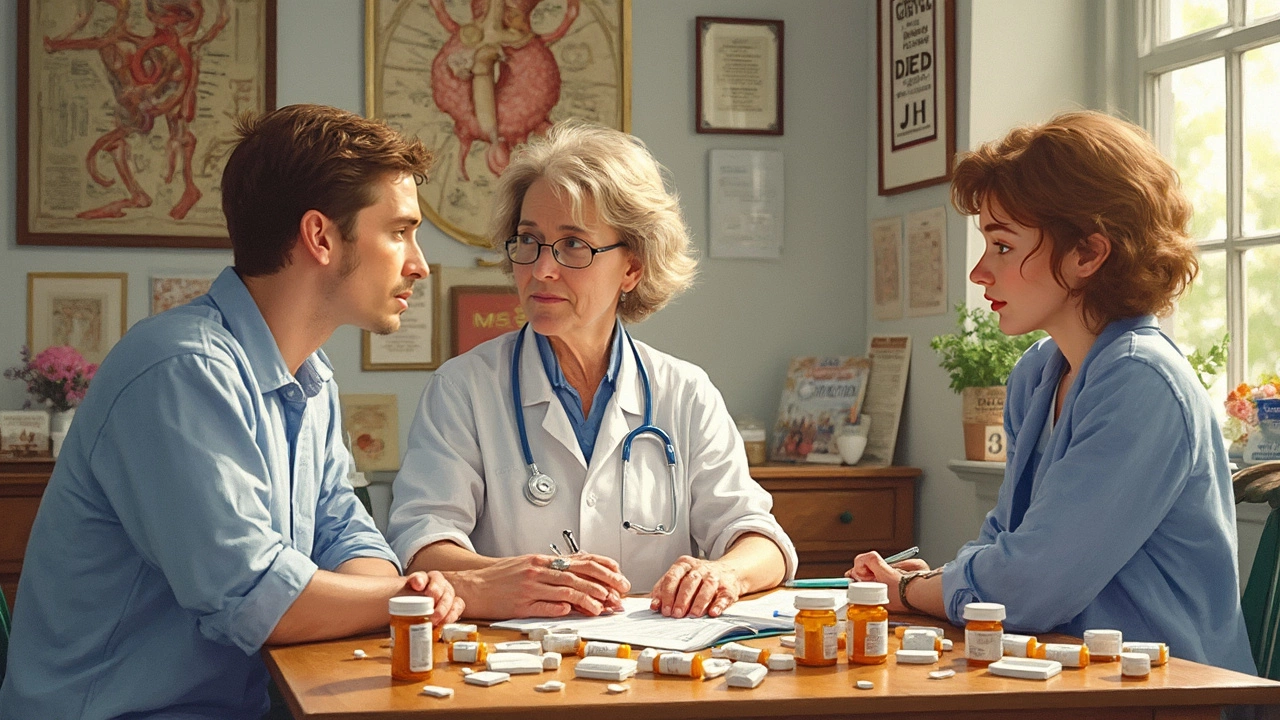GP Prescriptions: What You Need to Know When Your Doctor Writes a Script
If you’ve ever left a GP’s office with a stack of paper, you probably wondered how the whole prescription process works. In the UK, a GP prescription is the legal way you get most medicines from a pharmacy. It’s not just a piece of paper – it’s a record of what the doctor thinks will help you, how much you should take, and any special instructions.
Understanding the basics can save you time, avoid mistakes, and make sure you get the right treatment. Below we break down the steps from the moment the doctor writes the script to when you pick it up at the pharmacy, plus a few practical tips you can use right now.
How a GP Prescription Works
First, the GP decides which drug matches your condition. They’ll enter the details into the NHS prescription service, which creates a printable form (or an electronic transfer for most pharmacies). The prescription includes the drug name, strength, dosage, and the number of repeats you’re allowed.
When you hand the paper or the e‑prescription code to the pharmacy, the pharmacist checks it against your medication history. They’ll confirm the dosage, look for interactions, and may ask you a quick question about allergies or other meds you’re taking. Once everything is clear, they dispense the medication and give you a label with your name, dosage instructions, and the pharmacy’s contact.
If you have repeats, you can come back later without seeing the GP again – just hand the same prescription or use the electronic reference. This saves you a visit and keeps your treatment running smoothly.
Top Tips for Safe Use of Your Medication
1. Read the label. The pharmacy label spells out when to take the drug, how many tablets, and any food restrictions. Don’t rely on memory alone – a quick glance each time prevents mix‑ups.
2. Ask about side effects. Even common meds can cause unwanted reactions. Knowing the signs of an allergic response or a serious side effect helps you act fast.
3. Keep a medication list. Write down every prescription, over‑the‑counter drug, and supplement you use. Show this list to every GP and pharmacist you see – it’s the best way to spot dangerous combos.
4. Check the expiry date. Some drugs lose potency after a certain point. If a prescription is old, ask the pharmacist whether it’s still safe.
5. Don’t share meds. Even if a friend’s symptoms look similar, their health profile is different. Sharing can lead to incorrect dosing or dangerous interactions.
Following these steps helps you stay in control of your health and makes the whole prescription journey smoother. If something feels unclear, call the pharmacy – they’re used to answering quick questions and can often give you the answer in minutes.
Bottom line: GP prescriptions are a simple, regulated way to get the right medicines. Knowing how they’re processed and what to watch for means you get the benefits without the hassle. Keep the tips handy, ask questions when you need to, and you’ll be on the right track to feeling better faster.
GP Prescriptions: What You Really Need to Know
Understanding what a GP can prescribe is crucial for anyone visiting their local doctor's office. From antibiotics for an infection to medication for chronic conditions like asthma or hypertension, GPs are equipped to handle a variety of health issues. They can also provide preventive care advice and vaccinations. This article explores the range of medications and treatments available through your GP, making it easier to navigate your next appointment.

